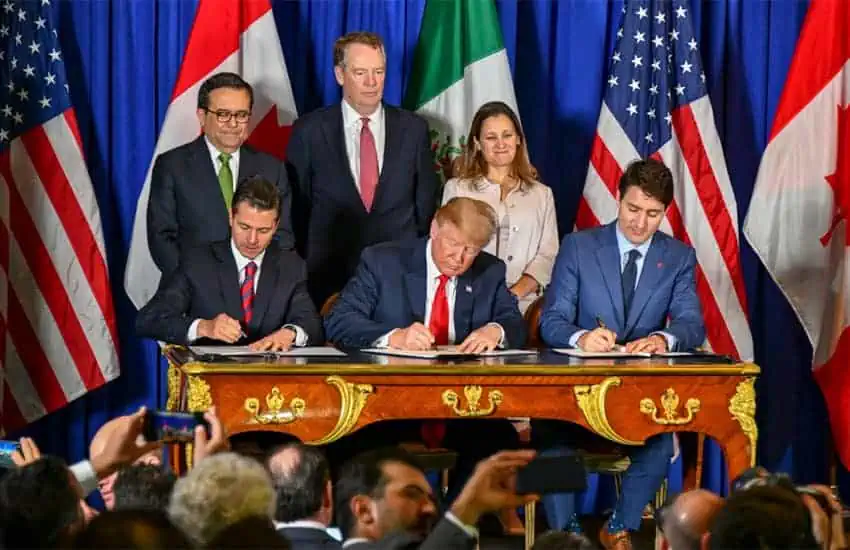Moody’s Ratings on Thursday downgraded its Mexico outlook from stable to negative, but maintained the country’s long term ratings at the second lowest investment grade level.
The New York-based credit rating agency said that its change in the outlook on the Mexican government’s ratings was “driven by our view of a weakening in the policymaking and institutional settings that risks undermining fiscal and economic outcomes.”
“Deteriorating debt affordability and further government spending rigidity make fiscal consolidation challenging, following this year’s widening in the government deficit — a deviation from a longstanding track record of low deficits regardless of economic pressures,” Moody’s said in a statement.
The rating agency also raised concerns about the recently-enacted judicial reform, saying that it “risks eroding checks and balances of the country’s judiciary system, with potential negative impact to Mexico’s economic and fiscal strength.”
“Finally, we consider there is an increased likelihood that contingent liabilities stemming from Petróleos Mexicanos (Pemex, B3 negative) could materialize onto the government’s balance sheet, while at the same time not restoring long-term debt sustainability for Pemex and therefore maintaining fiscal risks for the government,” Moody’s added.
The agency also raised concerns about the 2026 review of the United States-Mexico-Canada Agreement, saying that the Mexican economy could suffer “if modifications to the agreement’s rule of origins, labor specifications and other U.S. trade policies towards Mexico changed in a way that durably limit the country’s exports.”

With regard to its decision to reaffirm Mexico’s Baa2 rating, Moody’s said that the country’s economic strength is “comparatively high on account of the diversified economy,” which is “able to recover from large shocks.”
“… The ongoing shifts in global supply chains and geopolitical tensions between the U.S. and China have improved the prospects that Mexico will benefit from the nearshoring process,” the agency said.
“Over the past two years, there have been large investment announcements that, depending on implementation, have the potential to boost the Mexican economy’s growth performance in years to come.”
However, Moody’s also said that Mexico has had “relatively subdued long-term growth of about 2% for the past three decades” and that its expectation is that a similar trend will continue.
The rating agency said that an upgrade to Mexico’s sovereign ratings is unlikely given the current negative outlook but added that the outlook could return to stable “if we were to assess that the authorities’ fiscal consolidation efforts are likely to contribute to a rapid stabilization of the debt burden.”
It said that “a continued deviation from a track record of prudent fiscal policy management that undermines the effectiveness and credibility of macroeconomic policymaking would lead to downward rating pressure.”
A single-notch downgrade in Mexico’s long term ratings to Baa3 would put the country’s debt just above junk level.
Moody’s downgrade of its outlook for Mexico came a day before Finance Minister Rogelio Ramírez de la O submitted the federal government’s 2025 budget proposal to the lower house of Congress.
Finance Ministry hits back at Moody’s
The federal Finance Ministry (SHCP) said in a statement on Thursday that it was “important to mention” that Moody’s, when making its decision to downgrade its outlook for Mexico, did not have information about the 2025 budget, “the fiscal policy proposed for next year” or the Mexican government’s economic projections.
“This situation suggests that the analysis and perspective of Moody’s could have benefited from a more detailed and up-to-date evaluation,” the SHCP said.

“… The debt of the government of Mexico maintains solid attractiveness in international markets, demonstrating a resilient profile in the face of economic fluctuations and financial volatility,” the ministry said.
“In addition, Mexico has the necessary fiscal buffers to mitigate possible adverse scenarios in the global environment,” the SHCP said, adding that it is committed to “prudent” economic management that “reinforces the strength of public finances and the sustainability of debt.”
Among the economic projections included in the federal government’s budget proposal — as outlined in another SHCP statement issued on Friday — are the following:
- 2-3% growth in 2025, “supported by a solid labor market, robust private consumption and elevated levels of public and private investment.”
- A budget deficit of 3.2% of GDP in 2025, down from 5% this year.
- Public debt of 51.4% of GDP in 2025, contingent on a budget deficit of 3.2% of GDP and described by the SHCP as “a sustainable level” of debt.
Ramírez de la O said Friday that the SHCP anticipates the government will receive 8 trillion pesos (US $393.2 billion) in revenue in 2025, mostly from tax collection.
In its Friday statement, the Finance Ministry reiterated its commitment to “responsible fiscal management that maintains a moderate deficit and stable debt.”
The SHCP also said that the government’s budget proposal “emphasizes the application of the criteria of austerity, efficiency and transparency in public spending.”
“We’re planning solid investment in infrastructure projects that will immediately drive economic growth and generate long-term benefits. In addition, resources will be allocated to broaden the coverage of welfare programs, guaranteeing respect for constitutional rights and improving the quality of life of the [Mexican] population,” it said.
Mexico News Daily
